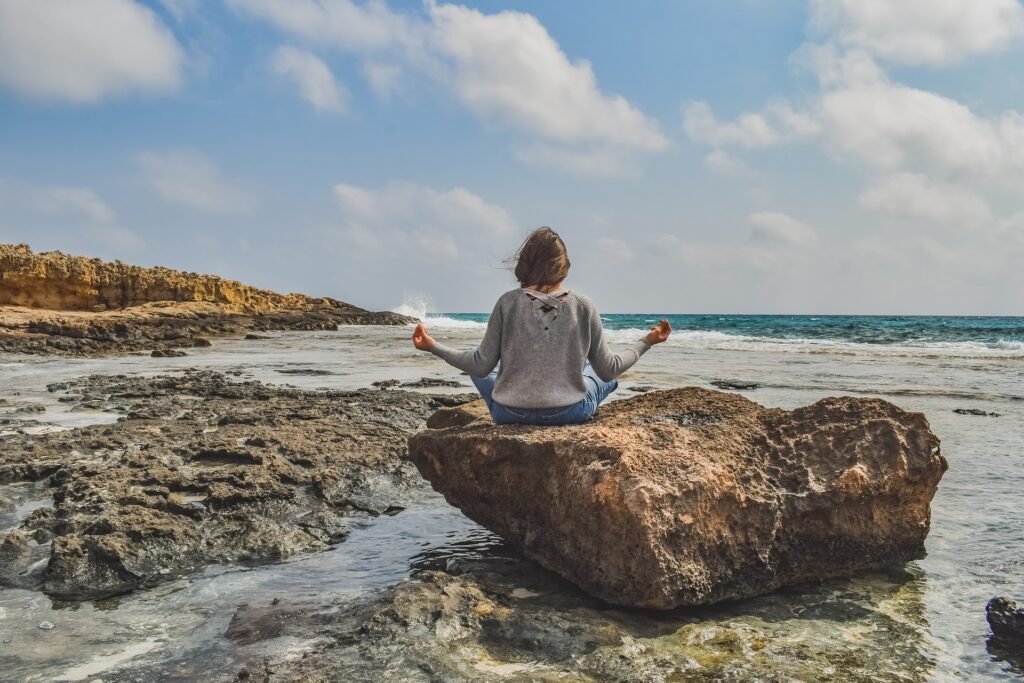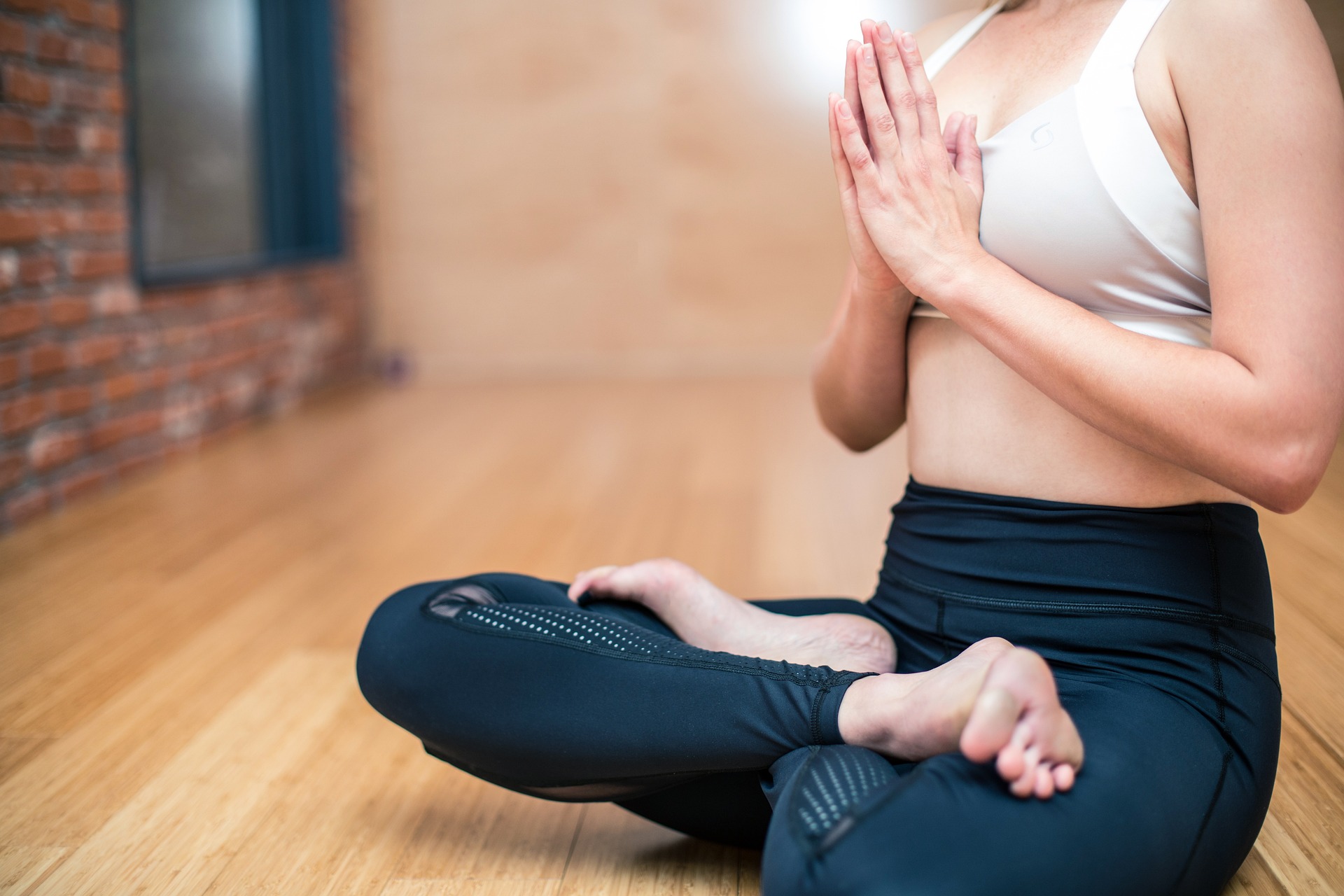Self-care is the practise of looking after one’s own needs in order to maintain a healthy mind, body, and spirit. It’s an important part of staying healthy and avoiding burnout. Self-care activities can range from as simple as taking a relaxing bath to as complex as taking up a new hobby.
With the current global situation, it’s critical to prioritise self-care, and what better place to do so than at home? Self-care activities can reduce stress, improve mood, and boost productivity.
This blog post will go over ten simple self-care activities that you can do in the privacy of your own home. These activities are simple to include in your daily routine and will assist you in maintaining a healthy work-life balance. So, whether you’re stressed out or simply need a break, these self-care activities are for you.
Activity #1: Create a relaxing space

A relaxing environment is essential, especially if you spend the majority of your time at home. Making a peaceful and calm environment can help you reduce stress and anxiety while also improving your overall well-being.
Some tips for creating a relaxing space:
- De-clutter: A cluttered environment can cause chaos and overwhelm. Begin by decluttering your space and getting rid of anything that isn’t functional.
- choose calming colors: Colors have the ability to affect your mood and emotions. To create a calm atmosphere, use calming colors such as blue, green, or beige.
- Add plants: Plants not only add color to your space, but they also have many benefits. They can help to clean the air, reduce stress, and boost productivity.
- Purchase comfortable furniture: Select furniture that is both comfortable and supportive of your posture. An ergonomic chair or a comfortable sofa can make a significant difference in your level of relaxation.
- Include soft lighting: Soft lighting can produce a cosy and peaceful atmosphere. To create a warm ambiance, use candles or warm light sources.
Some ideas on what to add to your space:
- a warm couch or a comfortable chair
- soft throw blankets or pillows
- indoor flowers or plants
- diffuser for essential oils
- A serene work of art
- a speaker or sound system for playing calming music
You are providing yourself with a safe and peaceful retreat from the outside world by creating a relaxing space. Spend some time assessing your surroundings and making the necessary changes to create a peaceful environment that supports your self-care routine.
Activity #2: Practice mindfulness

Being totally present in the moment, without distraction or judgement, is the practise of mindfulness. Focus, self-awareness, and stress reduction can all be aided by practising mindfulness.
Advantages of mindfulness practice:
- Reduces anxiety and stress: Mindfulness techniques assist to quiet the mind, lower levels of worry and stress, and improve general wellbeing.
- Enhances concentration: Mindfulness techniques help people concentrate and increase their focus, which makes it simpler to complete activities and stay on track.
- Enhances self-awareness: Mindfulness techniques aid in enhancing self-awareness, enabling people to identify destructive ideas and behaviors and take appropriate action.
Simple at-home mindfulness exercises:
- Breathing exercise: Exercise your breathing by finding a comfortable posture to sit or lie down comfortably. Inhale deeply through your nose, then exhale slowly through your mouth. Pay attention to how your breath feels as it enters and leaves your body.
- Body scan: Lay down and close your eyes to perform a body scan. From your toes to your head, concentrate on each individual body part. Take attention to any tension or discomfort in those areas and let it go.
- Gratitude journaling: Keep a gratitude notebook by listing three things each day for which you are grateful. This activity encourages positive thinking and helps concentrate attention away from negative thoughts.
You can improve your overall well-being and reduce stress and anxiety by incorporating mindfulness practices into your daily routine. Try out these simple exercises and see how they go.
Activity #3: Take a relaxing bath

Taking time for yourself is essential for self-care, and what better way to do so than with a soothing bath? It not only helps you unwind and relax, but it also has numerous health benefits.
Bathing has the following advantages:
- Reduces stress and anxiety: Warm baths can help lower cortisol levels, which are linked to reduced stress and anxiety.
- Enhances sleep: A warm bath before bed can aid in relaxation and raise the standard of your slumber.
- Reduces stress in the muscles: The warm water and steam helps ease painful muscles.
Suggestions for creating a relaxing bath experience:
- Get the vibe: To create a relaxing atmosphere, turn down the lights, light some candles, and put on some relaxing music.
- Use essential oils: Infuse your bathwater with a few drops of lavender, eucalyptus, or chamomile essential oils. Essential oils can aid in relaxation and have a number of advantages.
- Add Epsom salt: Epsom salt should also be added because it contains magnesium and can help ease pain and tension in the muscles.
- Try a bath bomb or bath salts: These products have a variety of aromas and can aid in relaxation.
- Treat yourself: Apply a face mask, exfoliate your skin, or give yourself a massage while taking a bath to treat yourself. Take advantage of this time to pamper and unwind.
A relaxing bath is a simple but effective way to incorporate self-care into your daily routine. Take some time to prepare a relaxing bath and enjoy the numerous benefits it offers.
Activity #4: Get moving

Exercise is not only important for physical health; it also has an impact on mental health. Endorphins, which are natural chemicals that help improve mood and reduce stress and anxiety, are released during exercise.
Simple exercises to do at home:
- Yoga: Yoga is a low-impact workout that helps increase strength, flexibility, and balance. Several online articles and instructional videos offer detailed instructions for performing yoga at home.
- Bodyweight exercises: You may perform exercises like squats, lunges, push-ups, and planks anyplace without any special equipment.
- Dance: Getting your heart rate up and elevating your mood may both be done while having fun. Dance around your home room as you are listening to music.
Tips for creating a workout routine:
- Start out small. Increase the length and intensity of your workouts gradually, starting with just a few minutes every day.
- Choose a hobby you like: Pick an enjoyable activity to engage in. This will encourage you to persevere and integrate it into your daily activities.
- Set a date for it: Establish a daily exercise schedule and adhere to it just like any other appointment. Give it high priority.
- Change it up: To avoid boredom and to test various muscle groups, include a variety of exercises in your regimen.
Moving your body is an excellent way to improve your mood, reduce stress, and improve your overall health. Begin slowly and gradually increase the length and intensity of your workouts, and you’ll soon notice the benefits of regular exercise.
Activity #5: Write in a journal

Journaling is an excellent way to improve mental health and practice self-care. It provides a safe environment for people to process their thoughts and emotions, and it can be a therapeutic way to reduce stress and anxiety.
Benefits of journaling:
- Reduces anxiety and stress: Putting your thoughts and feelings on paper can help you feel less anxious and stressed.
- Enhances mood: Journaling can enhance mood by allowing you to work through hard feelings and gain perspective on trying circumstances.
- Enhances creativity: Journaling can help foster creativity and promote self-expression.
To begin, follow these steps:
- Choose a journal: Select a journal in which you enjoy writing. It could be a notebook, a planner, or an electronic journal.
- Make time: Make time to write in your journal every day or week. Make it a regular part of your routine.
- Write freely: Write anything that comes to mind. When it comes to journaling, there are no rules.
Prompts to consider:
- Gratitude journal: Each day, write down three things you’re grateful for.
- Reflection: Think about your day or week and write down what you learned or what you want to improve on.
- Flow of consciousness: Write down whatever comes to mind without regard for judgement or structure.
Journaling is a simple yet effective method of self-care and mental health improvement. Make time each day or week to write in your journal and experiment with different prompts to get started.
Activity #6: Connect with loved ones

Social connections are critical components of our overall health and well-being. They offer us comfort, companionship, and a sense of belonging. However, in our hectic lives, it is easy to overlook these connections. That is why it is critical to set aside time to connect with loved ones.
Ways to connect with loved ones:
- Plan a phone call or video chat: Make time to speak with a loved one over the phone or via video chat. Even if you can’t be together in person, this can be a great way to stay connected.
- Send a letter or card: Receiving a handwritten letter or card in this digital age can be a meaningful and thoughtful way to connect with a loved one.
- Plan a virtual activity: Make a virtual game night, book club, or movie night a reality. This can be a fun and interactive way for friends and family to connect.
Ideas for connecting virtually:
- Virtual happy hour: Arrange a video conference with buddies to sip on a few drinks.
- Virtual exercise: Enroll in a virtual exercise class with friends or family.
- Virtual cooking class: Prepare a dinner with a loved one after taking a virtual cooking lesson.
Connecting with loved ones is an important component of self-care. It gives us the support and connection we require to thrive. So, even if it’s just a quick phone call or video chat, make time to connect with your loved ones.
Activity #7: Meditate

Meditation is a simple yet effective method for reducing stress, increasing mindfulness, and improving overall well-being. It is a practise in which the mind is trained to focus on the present moment without judgement or distraction.
Benefits of meditation:
- Reduces stress and anxiety: By encouraging relaxation and a peaceful disposition, meditation can help reduce tension and anxiety.
- Increases mindfulness: Mindfulness, or the capacity to be completely present and engaged in the present moment, can be increased by meditation.
- Enhances emotional wellbeing: Meditation can assist enhance emotional wellbeing by offering a secure environment to process challenging emotions and lessen self-critical thoughts.
To begin, follow these steps:
- Locate a peaceful, comfortable area: Look for a peaceful, quiet area where you may relax and unwind while sitting or lying down.
- Set a timer: To begin, set the timer for 5 to 10 minutes.
- Concentrate on your breathing: Shut your eyes and pay attention to your breathing. Take attention to how your body feels as the air enters and exits it.
A few meditation techniques to try:
- Mindfulness meditation: Mindfulness meditation entails concentrating on the present moment and your breathing. Notice and let go of any thoughts or distractions that arise without judgement.
- Meditation on loving-kindness: Concentrate on sending love and kindness to yourself and others. Repeat to yourself positive affirmations such as “May I be happy, healthy, and at peace.”
- Body scan meditation: Concentrate on each part of your body, beginning with your toes and working your way up to your head. Notice any sensations or tension in each part of your body and exhale to release it.
Meditation is a simple but effective way to improve one’s overall well-being. It’s simple to get started and can be done anywhere and at any time. Experiment with various types of meditation to see what works best for you.
Activity #8: Try a new hobby

Trying new things is an important part of personal development and self-care. It can assist us in developing new skills, broadening our horizons, and gaining a sense of accomplishment. Experimenting with new hobbies is a great way to get out of your comfort zone and discover new interests.
Some suggestions for new hobbies:
- Painting or drawing: Art is a wonderful way to express yourself and explore your creativity. Consider enrolling in a painting or drawing class or begin with simple online tutorials.
- Gardening: Gardening can be both a relaxing and rewarding hobby. You can begin with a few plants on your windowsill or balcony and gradually progress to a full garden.
- Cooking or baking: Cooking or baking is a fun and useful hobby that can also be shared with friends and family. Experiment with new recipes or your favorite ingredients.
Benefits of exploring new interests:
- Increases creativity: Taking up new interests can inspire your imagination and force you to think beyond the box.
- Reduces stress: Hobbies can help people relax and can lower their levels of stress.
- Increases self-esteem: Doing new activities and developing new talents can increase your self-esteem.
Taking up a new hobby is a great way to practise self-care and invest in your personal development. Don’t be afraid to try something new and step outside of your comfort zone. Who knows, you might find a new talent or passion!
Activity #9: Get enough sleep

Sleep is essential for our physical and mental health. Sleep is necessary for the body’s repair and regeneration, as well as for cognitive function and emotional well-being.
The value of sleep
- Enhances mood: Obtaining adequate sleep can enhance mood and lessen signs of worry and melancholy.
- Boost immune system: Sleep contributes to the immune system’s growth, which can aid in sickness and illness prevention.
- Improves cognition: Sleep is necessary for cognitive abilities such as memory, attention, and problem-solving.
Tips for improving sleep:
- Maintain a consistent sleep schedule: Try to go to bed and wake up at the same time every day, including weekends.
- Establish a relaxing bedtime routine: Create a relaxing bedtime routine to signal to your body that it is time to sleep. Taking a bath, reading a book, or practicing relaxation techniques are examples of such activities.
- Create a sleep-friendly environment: Make your bedroom sleep-friendly by making it quiet, cool, and dark, and by investing in a comfortable mattress and pillows.
Benefits of getting enough sleep:
- Increases energy: Getting enough sleep can help you feel more energized and less fatigued.
- Improves memory and concentration: Sleep is necessary for memory consolidation and can aid in the improvement of concentration and cognitive function.
- Reduces the risk of chronic diseases: A lack of sleep has been linked to an increased risk of chronic diseases such as obesity, diabetes, and heart disease.
Sleep is essential for our physical and mental health. In order to improve the quality and quantity of your sleep, try incorporating these tips into your routine.
Activity #10: Treat yourself

Self-care and self-love require that you treat yourself. It’s a chance to prioritise your needs and indulge in something enjoyable.
The importance of self-love:
- Increases self-esteem: Self-love can help boost self-esteem and self-worth.
- Reduces stress: Self-care can help you reduce stress and improve your overall well-being.
- Improves relationships: When we practice self-love, we are able to show up more fully in our relationships and connect more deeply with others.
Ideas for treating yourself:
- Purchase something for yourself that you’ve wanted: Treating yourself to something you’ve been wanting can make you feel happy and excited, whether it’s new apparel, a book, or a gadget.
- Take yourself out on a date: Arrange a date with yourself, whether it be a trip to the movies, a supper at your favorite restaurant, or a stroll around the park.
- Practice self-care: Schedule time for relaxing activities like a massage, bubble bath, or face mask.
Tips for prioritizing self-care:
- Plan it: Block off time on your calendar for self-care activities, just as you would for a meeting or appointment.
- Say no: Don’t be scared to decline obligations or pursuits that don’t fit your needs or your interests.
- Make it a habit: In order to make self-care activities a habit, incorporate them into your daily or weekly routine.
Self-care and self-love require that you treat yourself. Don’t be afraid to prioritise your needs and indulge in something pleasurable. You’ve earned it!
Conclusion
To summarise, self-care is critical for our overall well-being and happiness. It is critical to take time for ourselves and prioritise our needs, especially in today’s fast-paced world.
Summary of the ten activities:
- Create a relaxing space
- Practice mindfulness
- Take a relaxing bath
- Get moving
- Write in a journal
- Connect with loved ones
- Meditate
- Try a new hobby
- Get enough sleep
- Treat yourself
All of these activities are simple and easy to perform at home, making them easy to incorporate into your routine.
Advising on putting self-care first:
Don’t put off practising self-care until you’re exhausted or overwhelmed. Prioritize your needs and schedule time for yourself on a daily or weekly basis.
Final thoughts and advice:
Keep in mind that self-care is not selfish. It is critical to take care of yourself so that you can fully participate in all aspects of your life. Don’t be afraid to try out new activities to see what works best for you. Finally, be kind to yourself and practise self-love on a daily basis.
These ten self-care activities can help you feel more relaxed, refreshed, and fulfilled. Begin small and develop a habit of self-care, and you’ll soon reap the benefits of a happier, healthier, and more balanced life.
